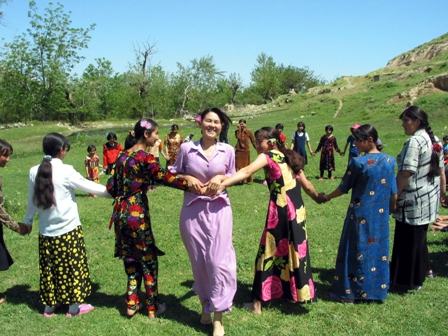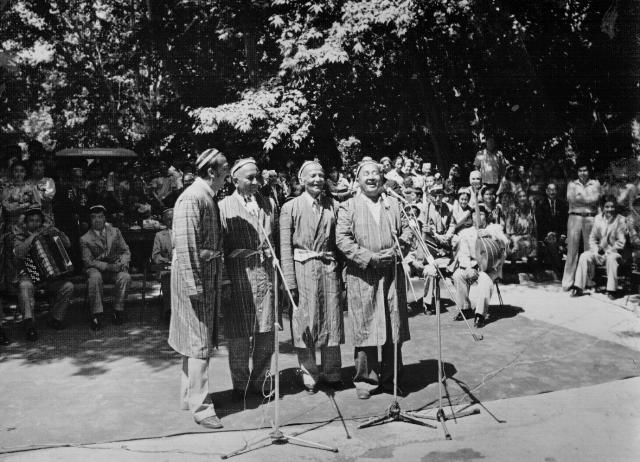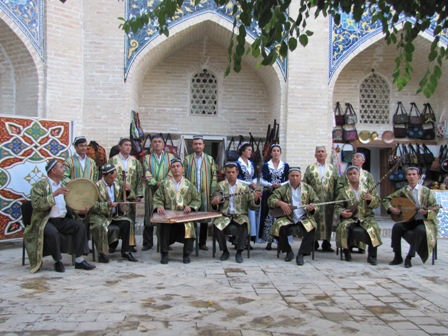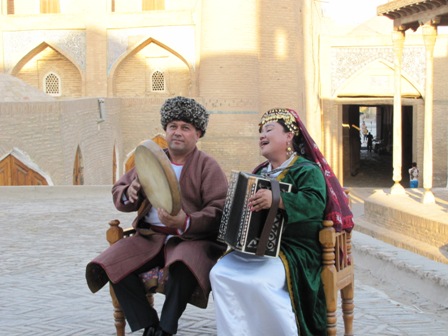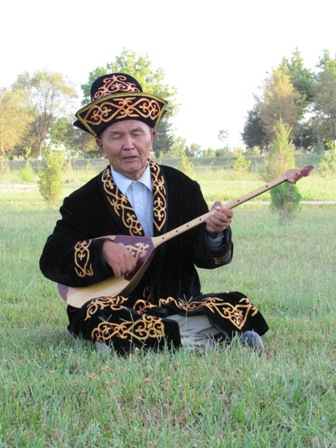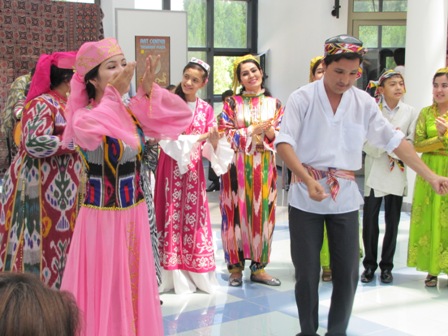Kandakorlik (Engraving)
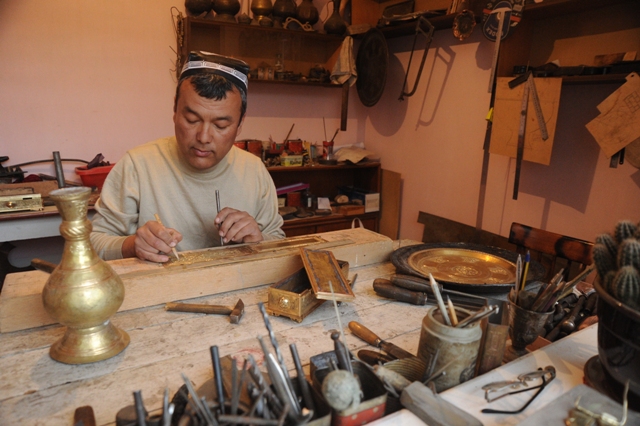
Domain: Traditional Craftsmanship
Index Number: 05.02
One of the most ancient types of applied arts of Uzbekistan is the art of metal working. This fact is testified thanks to the unique bronze items from Sopolitepa and Jarqoton ancient sites (related to the XV century B.C.), ritual cauldron of saka people (related to the V-IV century B.C.) as well as other historical and archaeological artifacts.
Notably, the items made of gold and silver, created by Soghd masters of engraving in V-VIII centuries A.D., are acknowledged as masterpieces of toreutics. Also, the items made of bronze and copper related to the IX - beginning of the XIII century and gold, silver and bronze dishes, related to the Temurids epoch, embody a true works of artistic engraving.
Major schools and centers of traditional engraving evolved in Uzbek khanates in the XVII – beginning of the XX century. In general it could be told that production of engraved items, made of copper, was part of urban crafts. As such, main centers of engraving, at the time, were located in the cities of Bukhara, Khiva, Kokand, Samarkand, Karshi, Shakhrisabz and Tashkent. Especially known and popular were the items made by Bukhara and Khiva engravers. They stood out with their beauty, ductility of shape, strictness and richness of ornamental motifs applied.
Leading techniques in finishing the surface of copper items are deep engraving (kandakori) as well as shallow engraving (chizma). Besides these, Uzbek masters use notch engraving (shabaka), and less often – the technique of inlaying stones or wires.
A set of tools used by coppersmiths and engravers, representing different centers, is almost the same. They use chisels with tips of various modifications (qalam), dividers (pargor), hammers (bolgha), instruments for polishing and smoothing (randa), etc.
The items of the XIX – beginning of the XX centuries were diverse in terms of shape and functional purpose. From among them, wonderfully decorated jugs for water and tea, all possible cup-shaped vessels for water, milk, fruit juice, beverages, sweets and fruits (which bore various names and differed in terms of form and shape) were very popular. Besides these, the following items were produced as well: trays, buckets, vessels for keeping food, scoops for water, braziers, cases for ceramic bowls, vases, jugs, wash-basins, containers for keeping small coins, caskets, devices for smoking, snuffboxes, writing utensils (such as pen cases, inkpots, lamps), as well as ritual-related items (bowls for alms and censers, hunting drums), etc.
Patterns used in engraving are rather typical and can be observed in other types of Uzbek decorative-applied arts. Wide-spread ornamental pattern called "islimi" (a curly vegetative pattern), has various versions. Geometric ornamental pattern called "girih" was used by engravers as an auxiliary one. Zoomorphic images, created in a stylized manner, were less common. By the end of the XIX – beginning of the XX century in the art of engraving of Ferghana, and later, in the art of engraving of Bukhara and Samarkand, images of architectural monuments began to be used. Parallel to this the images of fictitious beings began to be introduced by engravers of Kokand.
By the beginning of the 1970s the number of masters and centers of engraving sharply reduced. Production of engraved items suspended in many centers of Uzbekistan. At present, however, centers of engraving are being revived and the system of apprenticeship is being re-introduced. Nowadays, the masters of traditional engraving work in such cities as Tashkent, Shakhrisabz, Kokand, Ferghana, Bukhara and Khiva. Also a new phenomenon emerged, i.e. masters of engraving began to participate in designing the interiors of religious buildings (mosques, madrasahs), cafes and teahouses (which are usually designed in a traditional style). Changes are observed in the ornamental designing as well. For example, engravers try to improve further the designs of the items produced by them, by including new patterns and by applying the technique of incrustation with semi-precious stones.





